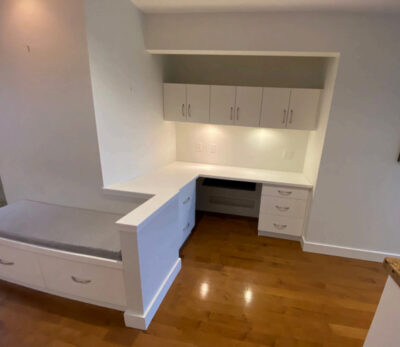How to Fix Paint Chips on Walls
When it comes to interior painting, some wear and tear is unavoidable. Chipping paint can be caused by bumpy or uneven surfaces, or can occur in high traffic areas like kitchens and hallways. Paint chipping is also common on corners. Over time, paint chips can become an eyesore.
If your paint is peeling, chipping, or cracking, it might be time to call a professional Vancouver painter. But if there are only a few spots to repair, you can likely make these fixes yourself. Read on to learn how to fix paint chips to quickly upgrade the look of your walls!
What you’ll need
The key to a successful interior painting project is ensuring that you have all of the necessary supplies and materials before you begin. Here is what you will need to fix chipped paint:
- Primer
- Paint
- Spackle
- Paint scraper
- Putty knife
- Sander
- Paint brush
- Wire brush
If you do not have the paint that was originally used to paint the wall, you will likely need to take a sample from the wall to your local paint store to have the colours matched. For small repairs, this shouldn’t be an issue, however if you have many chips and dents in the walls and do not have access to the original paint, you may need to repaint the entire wall. When it comes to colour matching, it is rare for two batches of the same colour to be exactly the same. This can lead to a patchy and blotchy appearance.
Four simple steps for fixing paint chips
Now that you have all of your materials, follow these steps for a professional finish.
1.Remove the paint and prepare the wall
Removing any loose paint surrounding the chip is key to ensuring smooth results. Using a paint scraper, remove the chipped paint. For best results, hold the scraper at an angle. This will help you gently peel the paint away without damaging your walls.
For smaller chips, use a wire brush to remove the paint. Then, lightly sand the surface including the chipped area and the surrounding paint.
2.Patch the wall
Using your spackle, fill in any gaps where the chip was removed. For wooden surfaces, wood filler may be a better solution than spackle. In most cases, following the instructions on the spackle will lead to a great application. Continue to apply the spackle until the chipped area is flush with the rest of the wall. Then, allow the wall to dry completely. This typically takes about 24 hours.
To complete the patch work, use your sander to level out the patched area until it is smooth and completely flush with the wall. Our professional interior painters recommend 180-220 grit sandpaper.
Finally, dust the area before moving onto step 3.
3.Prime and paint the surface
Primer helps the paint stick to the wall, and helps to seal the area to protect the structure from moisture. Once the primer has dried, you are ready to paint the wall!





